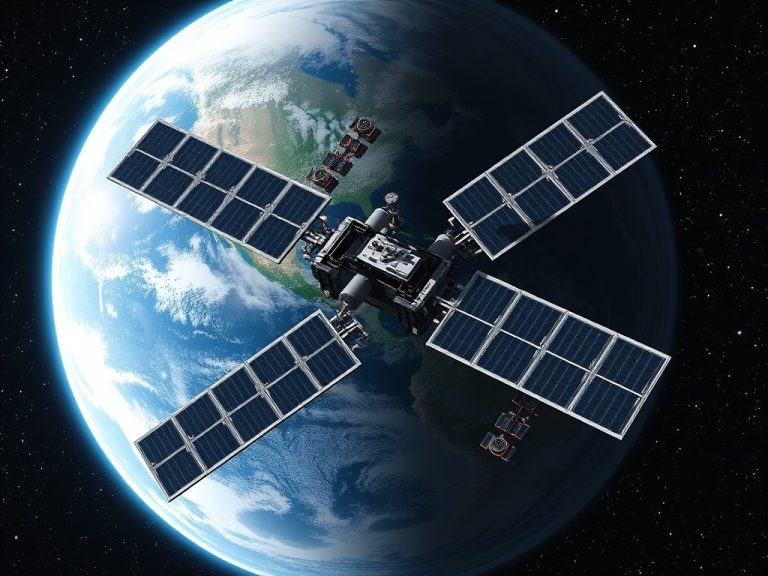
In today’s digital age, having a reliable internet connection is essential. This is especially true for people living in rural or remote areas where traditional internet services, like cable or DSL, may not be available. Satellite internet has become a popular choice for these locations, offering coverage where other options fall short. However, with several providers to choose from, it can be challenging to find the right one for your needs. This article will guide you through the key factors to consider when comparing satellite internet providers and help you make an informed decision.
Key Factors to Consider
1. Speed and Performance
Speed is one of the most important aspects of any internet service. It determines how quickly you can download files, stream videos, and browse the web. Most satellite internet providers offer different speed plans, typically ranging from 10 Mbps to 150 Mbps.
- Basic Usage: If you just need the internet for checking emails, browsing, and social media, a speed of around 10-25 Mbps may be sufficient.
- Streaming and Gaming: For streaming HD videos or online gaming, aim for speeds of at least 25-50 Mbps. Higher speeds, like those offered by Viasat and Starlink, can enhance your experience significantly.
2. Data Caps
Most satellite internet plans come with data limits, known as data caps. This means you can only use a certain amount of data each month. Exceeding this limit can result in slower speeds or extra charges.
- Understanding Your Needs: Think about how much data you typically use. Streaming movies can consume a lot of data—around 3 GB per hour for HD content. If you plan to use the internet heavily, look for plans with higher data caps or even unlimited data options.
- Unlimited Plans: Some providers, like Viasat, offer unlimited data during off-peak hours, which can be a great option for night owls or late-night users.
3. Latency
Latency refers to the delay in data transmission between your device and the satellite. It is measured in milliseconds (ms) and can affect your internet experience, especially for activities that require real-time interaction, such as gaming or video calls.
- Typical Latency: Satellite internet generally has higher latency than cable or fiber connections, often ranging from 500 ms to 700 ms. This can lead to noticeable delays in response times.
- Minimizing Latency: Look for providers that use low Earth orbit (LEO) satellites, like Starlink, as they can provide lower latency compared to traditional geostationary satellites.
4. Equipment Costs
When signing up for satellite internet, you’ll typically need to rent or purchase a satellite dish and modem. Equipment costs can vary widely among providers.
- Upfront Costs: Some companies charge an installation fee, while others may offer free installation as part of a promotional deal. Make sure to factor these costs into your overall budget.
- Monthly Fees: Equipment rentals can add to your monthly bill, so check whether the provider allows you to purchase the equipment outright for long-term savings.
5. Customer Support
Reliable customer support is crucial when you encounter issues with your internet service. Research the reputation of each provider’s customer service.
- Support Options: Look for companies that offer multiple ways to get help, such as phone support, live chat, and online resources. Some companies have better support ratings than others, so checking customer reviews can provide useful insights.
- Response Times: Quick response times can make a big difference, especially if you rely on the internet for work or study.
6. Contract Terms
Understanding the contract terms is essential before committing to a provider. Some companies require long-term contracts, while others offer more flexible month-to-month options.
- Length of Contract: Contracts can range from one to two years. Be aware of any early termination fees, as these can add to your costs if you decide to switch providers before the contract ends.
- Promotional Rates: Some providers may offer promotional rates for the first few months, so check what the regular rate will be after the promotional period ends.
Leading Satellite Internet Providers
1. HughesNet
HughesNet is one of the most well-known satellite internet providers in the U.S. They offer plans with speeds up to 25 Mbps and data limits ranging from 10 to 50 GB per month.
- Pros: HughesNet has a straightforward pricing structure and is available in many rural areas. They also provide a 24-month contract with a standard equipment fee.
- Cons: The data limits may not be suitable for heavy users, and speeds can be affected during peak usage times.
2. Viasat
Viasat offers competitive speeds, with some plans reaching up to 100 Mbps. Their data caps vary but can go as high as 150 GB.
- Pros: Viasat provides several plan options, including unlimited data during off-peak hours, making it a good choice for heavy users. The higher speed options can support multiple devices effectively.
- Cons: Some users report slower speeds during peak hours, so check local reviews for performance feedback.

3. Starlink
Starlink, operated by SpaceX, has quickly gained popularity for its fast speeds and low latency. Plans often exceed 100 Mbps, thanks to a network of low Earth orbit satellites.
- Pros: Starlink offers a more robust connection with lower latency, making it ideal for gaming and streaming. The installation process is relatively easy, and the service is expanding rapidly.
- Cons: Availability may still be limited in some areas, and the initial setup cost can be higher than other providers.
4. Amazon Project Kuiper
Amazon’s Project Kuiper is still under development but aims to provide global internet coverage through a network of satellites.
- Pros: If successful, it could offer competitive speeds and pricing. Keep an eye on this project as it progresses.
- Cons: Specific details on pricing and service availability are not yet available, so it’s more of a future option.
Conclusion
Choosing the right satellite internet provider depends on your specific needs, such as speed, data usage, and budget. By considering the factors outlined in this article, you can make a more informed decision. Whether you opt for HughesNet, Viasat, or Starlink, ensure that the provider you choose offers reliable service that meets your internet requirements. Take your time to compare plans, read customer reviews, and understand the terms of service. With the right provider, you can enjoy a seamless internet experience, even in the most remote locations.






